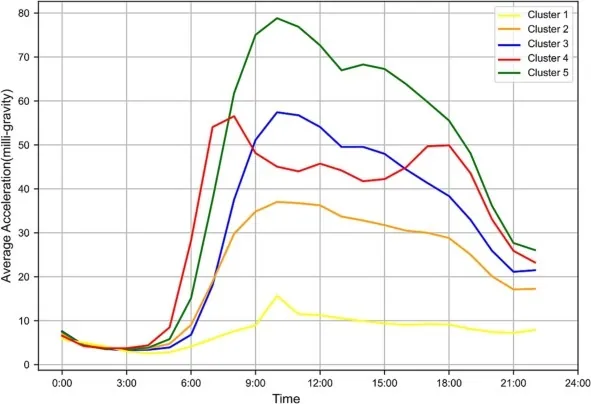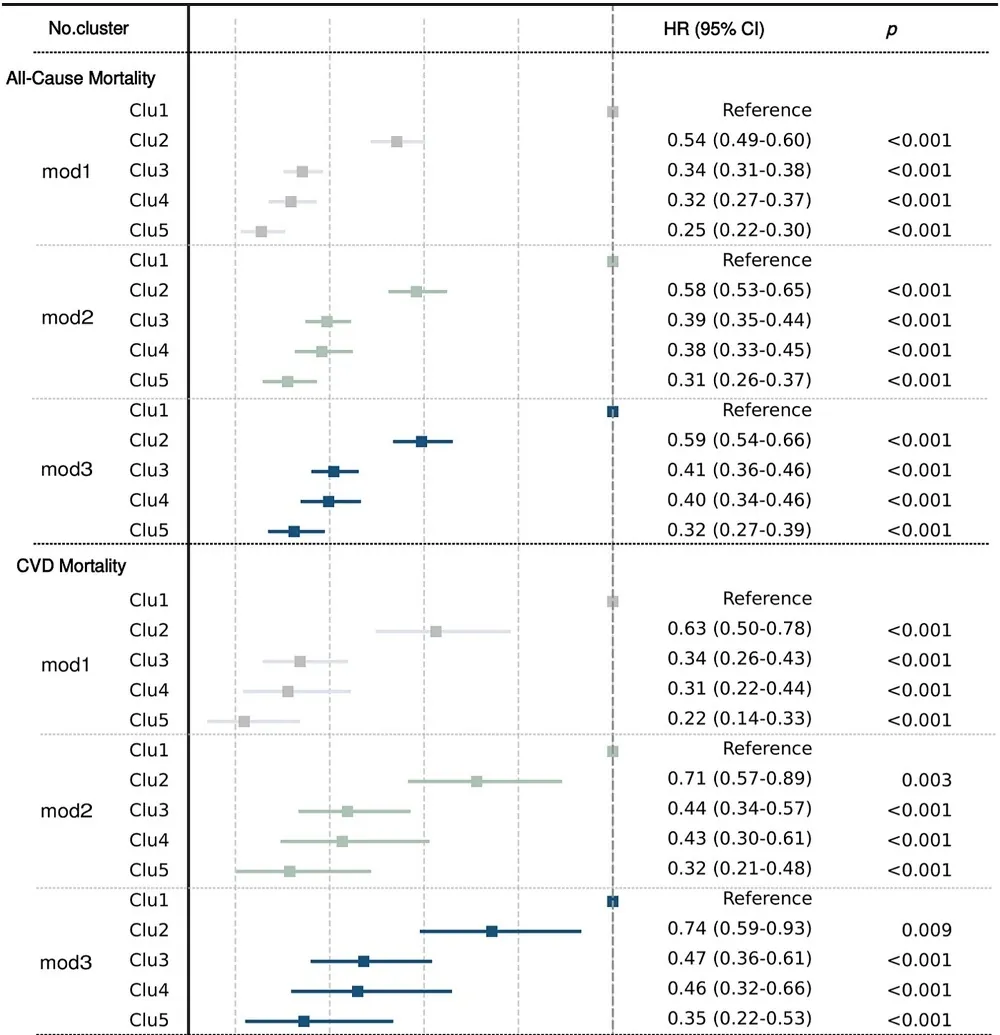In the International Journal of Cardiology, researchers have described five styles of exercise and compared them to mortality risk.
How much is the right amount?
It is well known that physical activity is associated with a significantly diminished risk of death by cardiovascular disease, the leading cause of death around the world. However, it has remained unclear just how much exercise is good at protecting against this cause of death, and previous studies have relied on self-reported examinations [1], which are subjective and therefore unreliable.
Previous work has determined that there is a relationship between disruptions in natural circadian rhythms, which govern sleep and activity cycles, and cardiovascular mortality [2]. However, how these rhythms in physical activity affect cardiovascular mortality is very difficult to research due to inaccuracies in self-reporting and problems with data collection. A part of the UK Biobank gave these researchers the data they needed to fill this gap.
Enter the accelerometer
While there were some exclusions from certain parts of this study due to specific health issues, a full 102,323 participants in the UK Biobank, which took data between 2006 and 2010, had wearable accelerometer data. Each of these participants wore a wrist accelerometer for a week, recording their normal amounts of activity.
An algorithm was used to cluster these participants into five distinct groups. In order, they were a persistently low group, a moderate-and-stable group, a single-increase group, a double-increase group with morning and evening peaks, and a vigorous group that performed more physical activity than anyone else.

As expected, the lowest activity group had the strongest correlations with cardiovascular disease and diabetes, being tied with the second-lowest group for cancer. They also had considerably higher BMIs.
In nearly 13 years following the data collection, the deaths of the UK Biobank participants were recorded. Even after adjusting for BMI, age, and other confounders in Model 3, the low-activity group was far more likely to die of any cause and of cardiovascular disease than any of the other groups, with even moderate activity associated with a lower risk. Greater amounts of activity, largely regardless of when it was conducted, was correlated with decreasing risk.

Inflammation is a factor
Three metrics were used to estimate the effects of biological aging: phenotypic age, systemic immune inflammation, and systemic inflammation response. As expected, phenotypic age was associated with all-cause mortality, and in a non-linear way: people with the highest phenotypic age were far more likely to die than anyone else. The inflammation indices were somewhat more linear, with the response index’s associations leveling out near its median.
Here, too, physical activity was found to have a strong association. As before, the three most vigorous clusters differed little, moderate exercisers had a slight advantage, and the people who exercised the least were found to have the greatest phenotypic ages and the most inflammation. The authors found that these anti-inflammatory effects played a mediating role in cardiovascular risk.
The authors also note that the double increase group seemed to be protected from ischemic heart disease as well as the vigorous exercise group, despite the latter group conducting much more physical activity during the day. This led them to conclude that circadian effects may be an important part of physical activity. However, it is also clear from the data that simply getting a sufficient amount of exercise on a regular basis is very strongly correlated with reduced mortality, from all causes and from cardiovascular disease.
Literature
[1] Castetbon, K., Vernay, M., Malon, A., Salanave, B., Deschamps, V., Roudier, C., … & Hercberg, S. (2009). Dietary intake, physical activity and nutritional status in adults: the French nutrition and health survey (ENNS, 2006–2007). British Journal of Nutrition, 102(5), 733-743.
[2] Man, A. W., Li, H., & Xia, N. (2021). Circadian rhythm: potential therapeutic target for atherosclerosis and thrombosis. International journal of molecular sciences, 22(2), 676.



